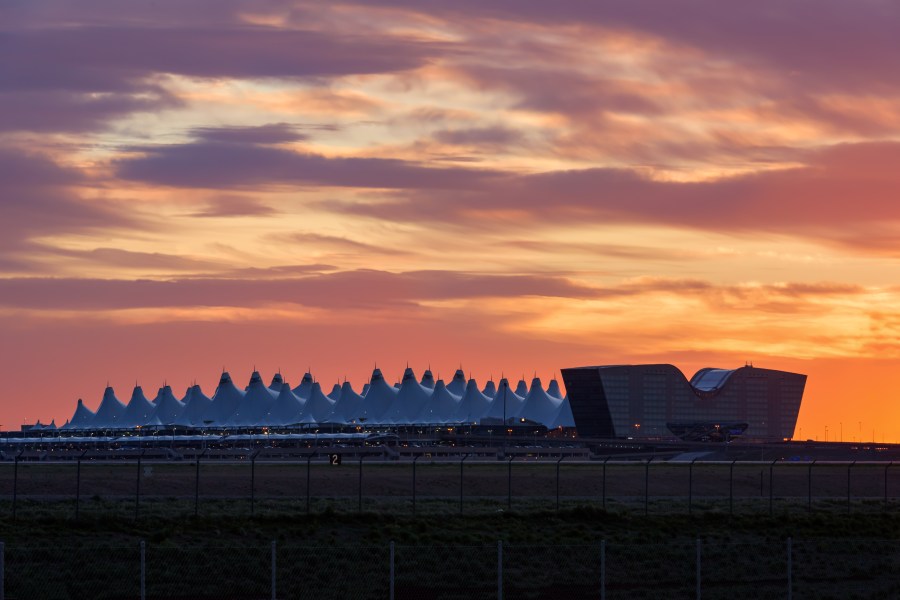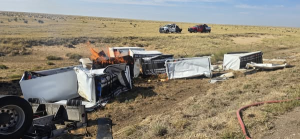[ad_1]

DENVER (KDVR) — The Federal Aviation Administration announced the specific airports that will see flight cuts as the department seeks to maintain air safety across the nation, and Denver International made the list.
The order requires certain air carriers to reduce total daily scheduled domestic operations between 6 a.m. and 10 p.m. at each airport by 10% through a slow ramp-up that begins Friday. There is no end date to the reductions. The FAA is requiring a 4% reduction in operations on Friday, a 6% reduction in operations by Nov. 11, an 8% reduction by Nov. 13, and to have the carriers reach the 10% reduction by Nov. 14.
“My department has many responsibilities, but our number one job is safety. This isn’t about politics – it’s about assessing the data and alleviating building risk in the system as controllers continue to work without pay,” said U.S. Transportation Secretary Sean P. Duffy in a statement on Thursday evening. “It’s safe to fly today, and it will continue to be safe to fly next week because of the proactive actions we are taking.”
The airline impacts are due to the ongoing federal government shutdown, which has led to air traffic controllers working without pay since the shutdown started last month. Many were calling out from the airport jobs, introducing staffing triggers to facilities across the country.
“We are seeing signs of stress in the system, so we are proactively reducing the number of flights to make sure the American people continue to fly safely,” said Federal Aviation Administrator Bryan Bedford. “The FAA will continue to closely monitor operations, and we will not hesitate to take further action to make sure air travel remains safe.”
One of those locations was in Denver earlier this week, and the FAA said on Oct. 31 that it has seen a surge in callouts.
“Currently, half of our Core 30 facilities are experiencing staffing shortages, and nearly 80 percent of air traffic controllers are absent at New York-area facilities,” the FAA stated on Oct. 31. “After 31 days without pay, air traffic controllers are under immense stress and fatigue.”
The FAA’s Thursday order will also prohibit some visual flight rule approaches at facilities with staffing triggers, limit commercial space launches to non-peak hours, and prohibit parachute operations and photo missions near facilities with staffing triggers.
According to the FAA the impacted airports are:
- Ted Stevens Anchorage International Airport
- Hartsfield-Jackson Atlanta International
- Boston Logan International
- Baltimore/Washington International
- Charlotte Douglas International
- Cincinnati/Northern Kentucky International
- Dallas Love Field
- Ronald Reagan Washington National
- Denver International
- Dallas/Fort Worth International
- Detroit Metropolitan Wayne County
- Newark Liberty International
- Fort Lauderdale/Hollywood International
- Honolulu International
- William P. Hobby Airport
- Washington Dulles International
- George Bush Houston Intercontinental
- Indianapolis International
- New York John F. Kennedy International
- Las Vegas McCarran International
- Los Angeles International
- New York LaGuardia
- Orlando International
- Chicago Midway
- Memphis International
- Miami International
- Minneapolis/St. Paul International
- Oakland International
- Ontario International
- Chicago O`Hare International
- Portland International
- Philadelphia International
- Phoenix Sky Harbor International
- San Diego International
- Louisville International
- Seattle/Tacoma International
- San Francisco International
- Salt Lake City International
- Teterboro
- Tampa International
FOX31’s Gabrielle Franklin was at DIA on Thursday where she spoke with travelers, including Deby from Laramie. She said that some of the impacts are already being seen.
“My flight got delayed and I had a connection, so then they had to reroute me and I ended up in a different city and had to rent a car,” Deby said. “So the air traffic control is a real deal and I hear tomorrow gets worse.”
United Airlines told FOX31 on Thursday that it has already started making adjustments through at least Sunday, and reduced flights by 4% each day. That amounts to about 20 flights out of Denver.
On Wednesday, DIA requested permission from the FAA to use airport revenue to support air traffic controllers, and later submit a reimbursement request from the federal government to repay the airport after the federal shutdown ends.
DIA also created a food and essentials pantry for the Transportation Security Administration, FAA, Customs and Border Protection and other federal employees who are working without pay at the airport.
Gov. Jared Polis also spoke out on the matter.
“We’re still learning more, but how challenging it can be if you plan to go somewhere to see your family and all of a sudden your flight is canceled. Check your flights ahead of time. In the meantime, call on President Trump, the Republicans who control Congress in the Senate to reopen the government. Let’s fix this!” Polis said.
Denver Mayor Mike Johnston pointed blame at President Donald Trump, but said the city will support federal employees and keep DIA running at full capacity.
“President Trump’s shutdown has forced federal employees to work without pay and left 100,000 Denverites without access to food. Now his dysfunction is threatening to cancel flights for millions of Americans and kneecap our state’s largest economic engine,” said Johnston in a release. “I fully support the airport’s efforts to pay air traffic controllers, and I urge the Trump Administration to stop playing politics, lift these restrictions, and keep our flights running smoothly, safely, and at full strength.”
DIA is the third busiest airport in the U.S., and sixth busiest in the world, according to the city. DIA also contributes over $47 billion to Colorado’s economy and supports nearly 245,000 jobs.
[ad_2]

Anthony Sutton is a business strategist and writer with a passion for management, leadership, and entrepreneurship. With years of experience in the corporate world, he shares insights on business growth, strategy, and innovation through management-opleiding.org.




